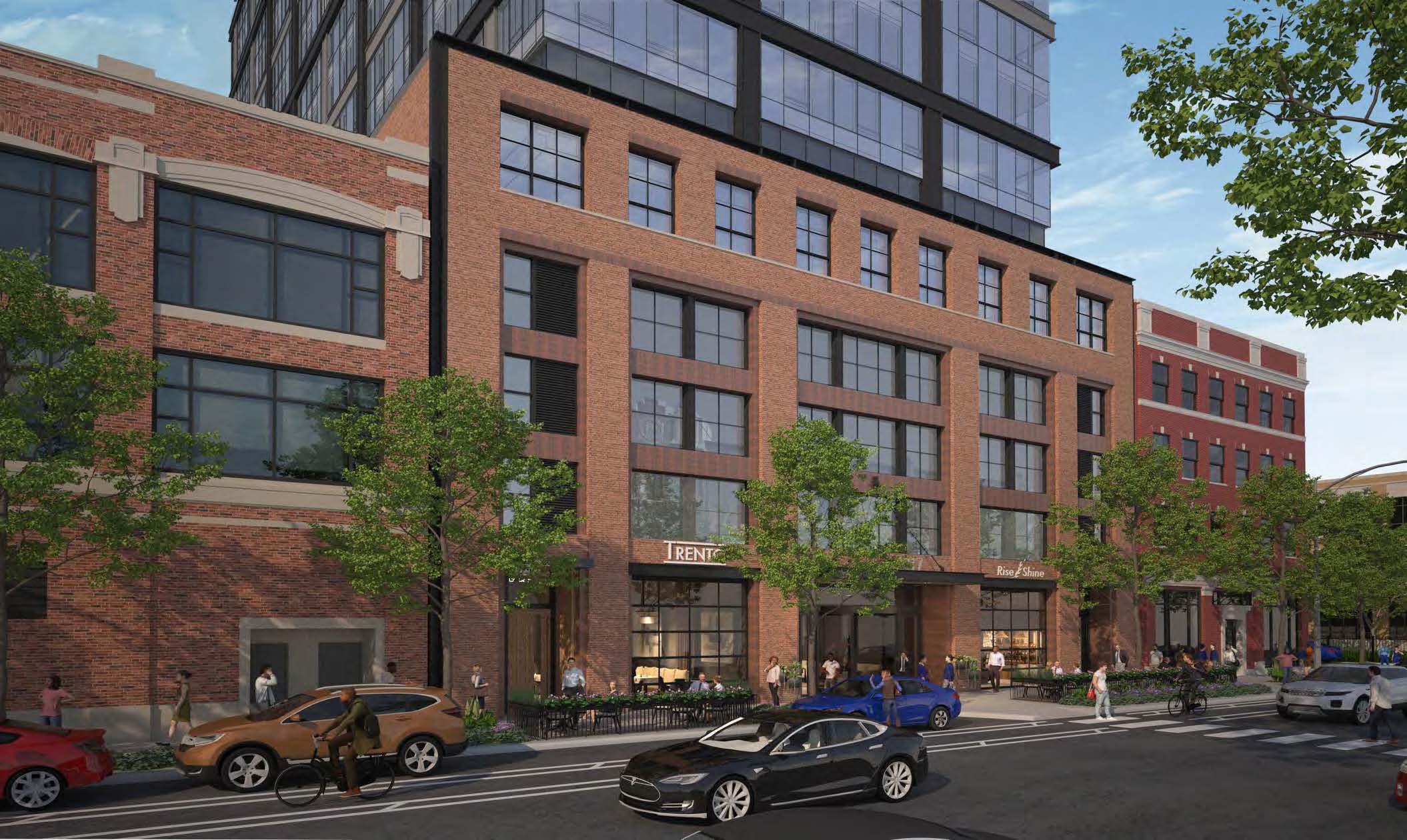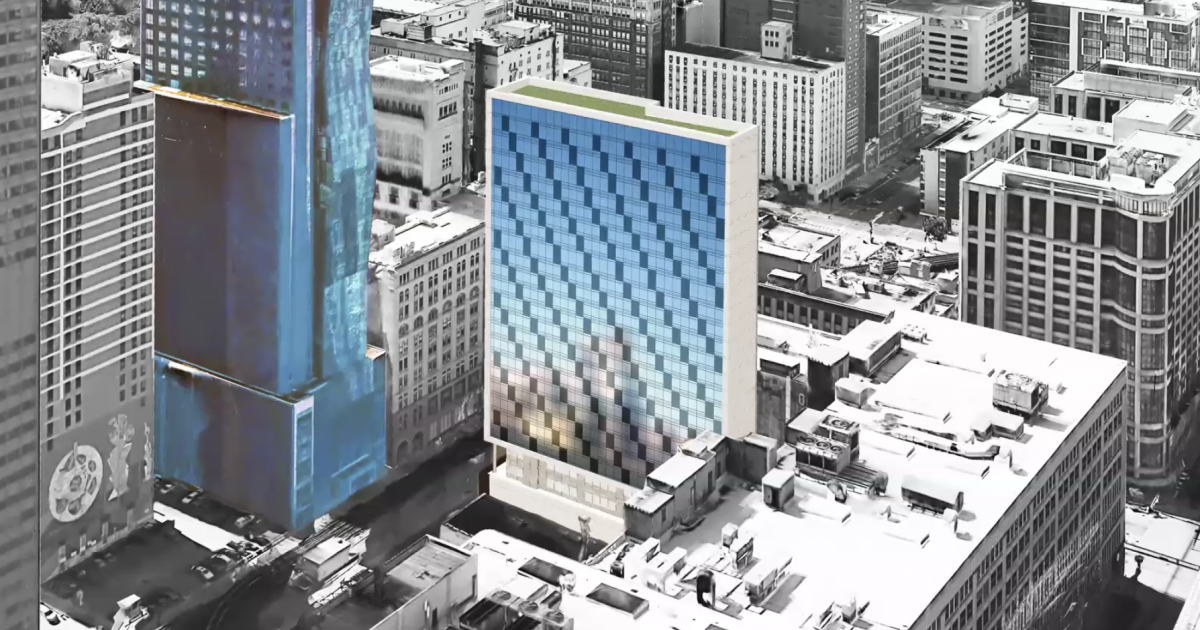The mixed-use building is becoming increasingly popular in cities across the U.S. for the wide range of benefits that appeal to many people. A Montgomery County Planning Department Staff study found that almost 50% of all new construction for commercial and multi-family developments between 2010 and 2020 were mixed use. Let’s take a closer look at what defines this type of development and its pros and cons.
Mixed-use buildings are developments that contain a variety of uses, such as residential, office, retail, and industrial. These buildings are often in urban and suburban areas and offer many benefits to the people living and working there. Many mixed-use projects aim to create an interconnected community where people may live, work, and play without requiring access to a vehicle.
Most developments include parking for residents and customers, but the goal is to reduce the need for cars by providing a mix of uses within walking distance. Of course, these are also ideal for electric vehicles and can offer charging ports for tenants. For example, mixed-use buildings often offer bicycle storage areas, encouraging residents to use this mode of transportation.

Invest in multi-unit residential housing.
These developments are part of smart growth, an urban planning strategy emphasizing the creation of walkable, interconnected communities.
Mixed-use buildings come in many shapes and sizes. Here are a few of the most common types:
Depending on the location and size of the development, mixed-use buildings may mix each of these uses or specialize in one type, such as residential or office.
There are three types of mixed-use building styles: vertical, horizontal, and composite.
Vertical buildings are the most common type. They are typically tall structures with different businesses on each floor. For example, a vertical mixed-use building might have retail on the ground floor, offices on the middle floors, and residential units on the top floors. They also have more areas open to the public on the ground floors than composite or horizontal mixed-use buildings.
They spread these developments out horizontally rather than vertically. They often have a variety of uses, such as retail, office, and residential, on different parts of the property. For example, a horizontal mixed-use building might have retail space in the front, office space in the middle, and residential units in the back.
Mixed-use buildings can be found in urban and suburban areas. They’re often near public transportation, which makes them convenient for people who live and work there.
In urban areas, mixed-use buildings are often infill developments built on vacant lots. These projects help reduce sprawl and traffic congestion in cities.
In suburban areas, mixed-use buildings are often part of more significant developments, such as shopping centers. They provide a convenient place for people to live, work, and shop without driving.
Mixed-use developments are an essential part of smart growth, an urban planning strategy that emphasizes the creation of walkable, interconnected communities. Smart growth aims to reduce sprawl, traffic congestion, and air pollution by creating high-density developments with various uses.
Urban sprawl is the uncontrolled expansion of cities into rural areas. It often leads to the construction of single-use developments, such as housing subdivisions and office parks, which require people to drive to get around. This increases traffic congestion and pollution and contributes to global warming.
Mixed-use developments are essential to smart growth, an urban planning strategy that aims to stop urban sprawl. Smart growth creates high-density results with various uses so people can live, work, and shop without driving. This reduces traffic congestion and air pollution and helps to fight climate change.
If we plan things out properly, we can avoid traffic jams. This will make it easier for everyone to get around.
According to a recent report on the “2022’s Best and Worst Cities to Drive in” by WalletHub, the collective cost of wasted time and money for traffic congestion is about $564 per driver yearly.
Which cities have the worst congestion?
With more mixed-use developments, we can reduce traffic congestion by allowing people to live, work, and shop in the same place. Traffic is terrible for the environment, our finances, and overall health and productivity.
Statistics compiled during COVID-19 highlight how reducing congestion can help people in cities reclaim their time. For example, drivers in Miami spend 27 fewer hours in traffic, and in Chicago, they gained 29 hours away from traffic jams in 2021 compared to 2019.
Air pollution is one of the leading environmental health risks. It’s caused by cars, trucks, buses, and factories emissions. These emissions contain harmful chemicals, such as carbon monoxide, nitrogen oxides, and particulate matter. They can cause several health problems, including respiratory diseases, heart disease, and cancer.
Mixed-use developments can help reduce air pollution by cutting down the number of car trips people take. When people can live, work, and shop in the same place, they don’t have to drive as much. This reduces traffic congestion and the number of harmful emissions released into the air.

Virtual representation of the proposed 26-story Sonder Hotel at 424 S. Wabash Ave.
Mixed-use buildings are also vital for creating economic growth. They provide a place for businesses to locate, which creates jobs and generates tax revenue. They also attract people to live and work in an area, increasing the local economy.
Stay tuned for part two of our series on mixed-use buildings! In the meantime, check out DAC Development’s portfolio to see some of our past projects.